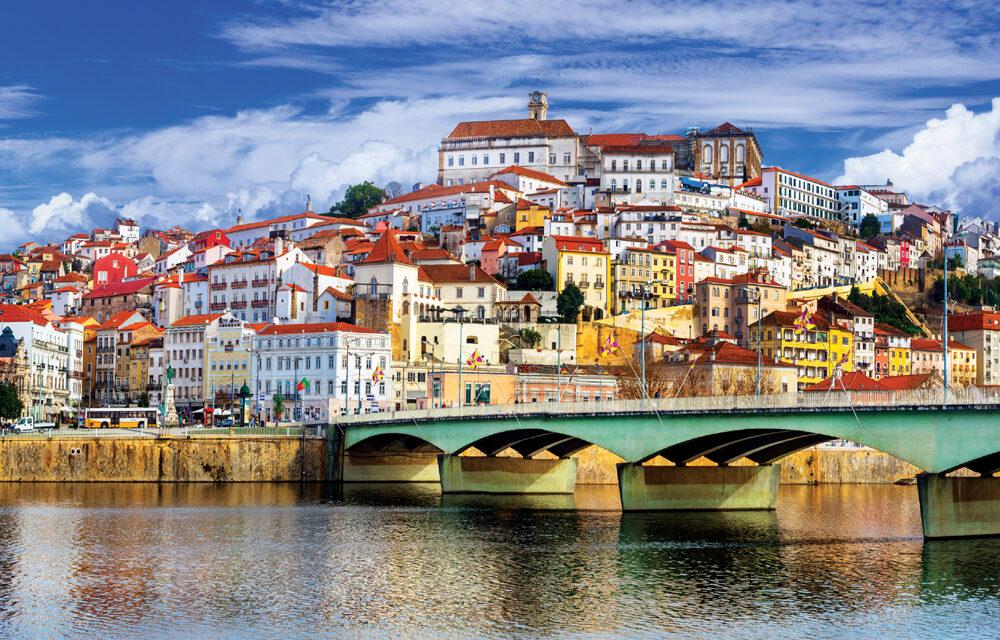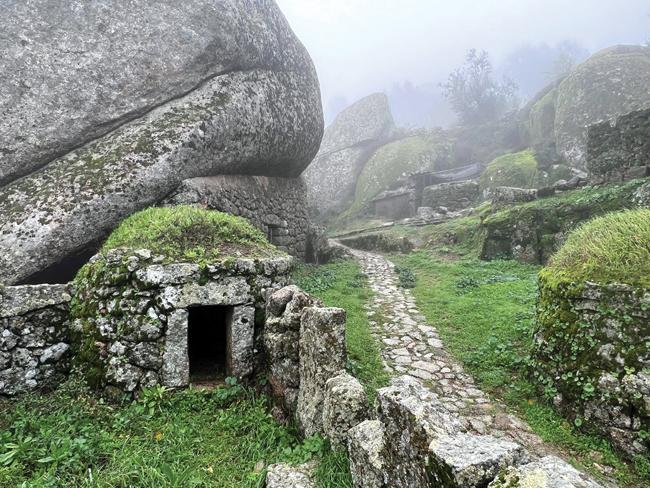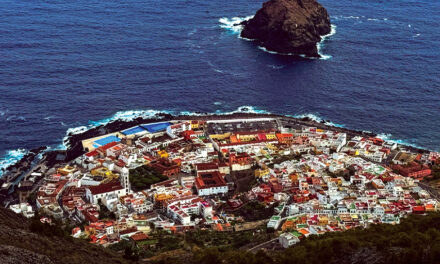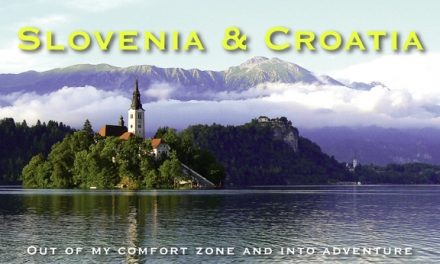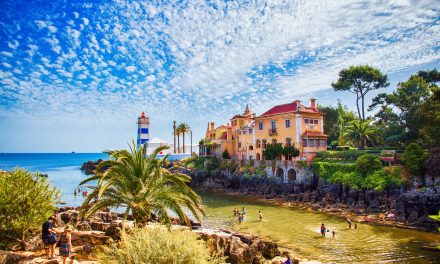Portugal
Portugal for Delights and Discoveries
Article and photography by Lisa TE Sonne
T he “Age of Discovery” that changed the world was launched from Portugal with explorers heading out from the most southwestern part of Europe. Now, 500 years later, “the age of discoveries” seems to be about going to Portugal not from it. All kinds of people are making their own discoveries in this small EU democracy that’s one sixth the size of France, but that sends visitors home with a big bag of memories.
This land of river cities, lovely weather, vineyards, and 1,800 kilometers of coast (from old fishing villages to iconic surfing spots) keeps ranking high in the charts of safest countries, best health care, best places to retire, and more. Portugal offers modern tourist infrastructure, natural wonders, and the fascinating vestiges of an historical past — the Visigoths, Moors, and Romans all called it home at one time.
My husband and I have loved making our personal “discoveries” during three visits to Portugal in the last two years, exploring different regions. Like many travelers, we like to weave in the quirky and unusual with the mainstays, and some serendipity with planning. Lisbon and Porto are well worth visiting, but here are some of our stand-out memories that might inspire you to make your own discoveries elsewhere:
Waking up in a medieval castle in Óbidos during a chocolate festival
This charming city is sometimes called the City of Queens, because the walled settlement and the castle were given by King D. Afonso II to his wife in 1210 and was owned by many subsequent Queens. Today, the castle is the Pousada Castelo de Óbidos, an historic hotel. Our visit was timed deliciously (for my tastes) to partake in the International Chocolate Festival in Óbidos. We sampled many wares, and enjoyed the live music, large chocolate sculptures, and a parade winding through the maze of narrow streets of beguiling shops and white homes painted with yellow or blue trim. Walking atop the encircling medieval wall around the whole festal village, we burned some chocolate calories and fueled our imaginations.
Toasting “Happy Birthday” with champagne to Fado singer Florrea Calota
While visiting Coimbra, we attended a moving concert of Fado music, the traditional soul tunes of Portugal in a beautiful former 14th century chapel on the site of a medieval Jewish Synagogue. After the last applause, we stayed behind in The Cultural House aCapella’s remarkable setting to say obrigada (thank you from a female). Calota and her musicians invited us and some lingering local music students to stay longer and celebrate her birthday, which began at the stroke of midnight. We were embraced by impromptu sing-alongs and mutual good wishes that go beyond translation.
This was a delightful, unexpected way to end a day that had included chatting with students in their traditional black gown uniforms (one of many Happy Potter touches that JK Rowling incorporated in her writing while living in Portugal.) These caped students were bustling about one of the oldest continuing universities in the world. Originally chartered in 1290, Coimbra University’s highlights include the Joanine Library and the “Exam” room where, for hundreds of years, students presented their orals in a room worthy of being a museum.
Hanging out with Gandhi, Bart Simpson, and Queen Elizabeth (who was about to have tea)
Everything in “Sand City” — from the Dali Lama to Salvador Dali — was made of sand. This unexpectedly charming attraction is in Lagoa, on the southern coastline of Portugal’s famed Algarve area. Billed as the largest sculptural Sand Park in the world, it showcases the work of over 60 artists and is full of iconic world sights, from Angor Wat to the Pyramids of both Egypt and Central America, as well as many animals and famous people in history and pop culture. We had already greatly enjoyed walking many of the sandy beaches of Portugal’s extensive gorgeous coastline – from nature reserves to tourist beach resort meccas. This walk-around exhibition Park, though, was a creative use of sand we hadn’t seen before!
Learning about a city retrieving a secret history of survival
Before the Spanish Inquisition, Portugal was known to have the most tolerant policies for Jewish people in Europe. Then, in the 15th century, all the Moors and Jews were expelled from the Iberian Peninsula. The remote town of Belmont became a secret haven for Jews who were willing to practice Catholic rites in public and continue to honor Jewish rituals privately. Over the centuries, the descendants of those Jews passed down many traditions, but they lost the knowledge of why they were doing them. As an example, they made unleavened bread around Easter, without knowing anymore that it was an integral part of the Jewish holiday Passover, which occurs around the same time.
In the 20th century, anthropologists made discoveries to help illuminate the hidden history. The town now embraces its Jewish roots, with a modern museum that illustrates how an endangered culture found ways to stay alive enough to be revived, centuries later. Belmont also now has signs on many of the houses explaining which Jews lived there during the Inquisition and what happened to them.
Answering the knock on the door every morning to receive freshly baked bread and honey
Our rental host in Monsanto made the deliveries, and we ate in our modern kitchen with big boulders protruding inside. In the Beira Interior region of Portugal, the picturesque hilly town has old homes literally built around boulders. Outside our doorway, we wandered up (very up) cobbled walkways, then dirt paths, past other boulder homes and through mist and fog to seek the ruins of an ancient castle. Along the way, a cat found us and led us up the path. When we reached a fork, the fog was thickening and we weren’t sure which way to go, but the cat was. We trusted the beautiful creature and made it to the top. Then, having done her job, the cat abandoned us when she saw the only other two people in the castle’s courtyard. But, of course she did… they had food.
Being physically reminded that life is short (and good)
The murals and columns and walls in the “Chapel of Bones” are completely adorned by the bones and skulls of monks. Above the entrance to the chapel in the large city of Évora is a Latin inscription that translates as, “We bones that are here, for you we wait.” Three Franciscan friars came up with this long-lasting, macabre idea in the 17th century as a way to remind people of the temporary nature of life on earth.
Fortunately, outside the chapel bones and doors, Évora has plenty of reminders that life is good. The medieval, walled city is a UNESCO World Heritage Site, and it has been voted a European Capital of Culture for 2027, which means it will be showing off even more of its good in the future. Many travelers enjoy seeing part of the Roman Temple (misnamed The Temple of Diana) not far from the gothic Cathedral of Evora started in the 12th century. To escape a Spring rain, we ducked into the Watch Museum, a more amusing way to contemplate the passage of time.
Making a U-turn after passing a sign we translated as “cheese museum.”
The arrow pointed in the direction of a long, bumpy road that seemed to lead nowhere. When we finally arrived at a little village, we drove up and down the streets until we found the unimposing museum. The woman who collected our entrance fee locked the front door behind us and proceeded to give us a remarkable tour. We were the only ones there.
When she brought us a platter of delicious Portuguese cheeses, we thought that was the end of this unscheduled interlude, but when we asked what else she recommended we see in Portugal, she encouraged us to jump in her car to visit an “unusual” place that is difficult to find.
The site, once called Hotel Serra de Pena or Termas de Áquas Radium, used to be a famous hotel and spa where the rich and famous sat in radium baths for — wait for it — their health. It was an opulent, lavish destination until WW II, when it was revealed that radium is not healthy. Now, the site is a ghostly fairy-tale ruin amidst lovely nature and is occasionally used by movie directors as a location for filming.
Seeing the sparkling lights of Lisbon from the windows of a converted hilltop windmill
Portugal has a diverse range of converted windmills that can be rented through Airbnb, with some of them very reasonable in price. Ours was only a walk and a ferry ride across the Tagus River to the dynamic vibrant neighborhoods of Lisbon, which we had enjoyed in previous trips. This most recent journey, however, had been full of exploring the south of Portugal, and my husband found the perfect place for us to pause and transition from active travel to heading back home to busy lives.
Our two-night stay in the three-story former windmill came with a vast yard of fruit orchards and four tree house platforms in old olive trees. We sat high in the branches with gentle breezes, some lovely wildlife, picnic food, and soothing views. It was also a relaxing setting for reviews. We talked of our memorable times so far and of future places to visit in Portugal for our own personal “age of discoveries” to continue.

